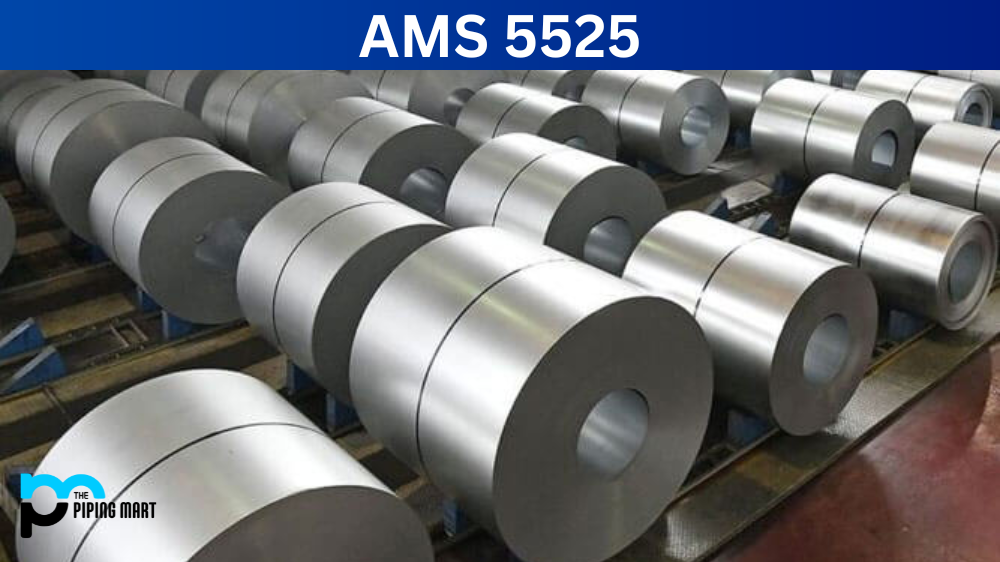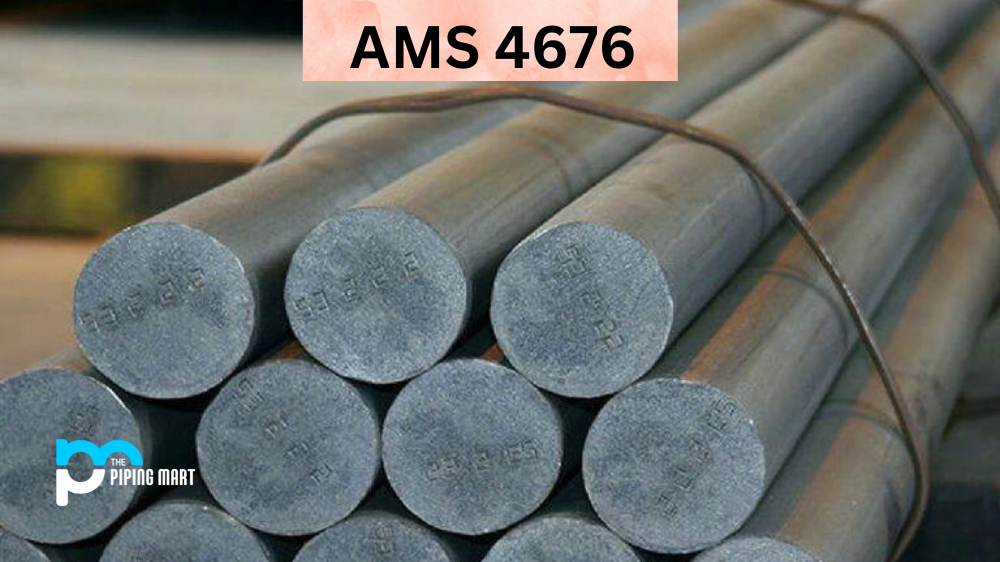AMS 5525 is a popular aerospace-grade stainless steel alloy widely used in various industries, including aircraft and missile production, petrochemical processing, nuclear engineering, and medical device fabrication. In this blog, we will delve deeper into the composition, properties, and applications of AMS 5525 and how it compares to other stainless steel alloys.
What is AMS 5525?
AMS 5525 (also known as Stainless Steel A286) is a standard used in the aerospace and defence industries. It specifies requirements for corrosion and heat-resistant stainless steel sheets, strips, and plates. This material is commonly used in applications where extreme conditions are a concern, such as jet engines and gas turbines. The AMS5525 standard ensures that the material meets strict guidelines for durability and performance. It’s fascinating to think that a little-known standard like AMS5525 plays a critical role in ensuring the safety and reliability of the equipment we rely on daily.
AMS 5525 Composition
AMS 5525 sheet is a type of stainless steel comprising 17-19% chromium, 9-12% nickel, and 2.5-3.5% molybdenum. Additionally, it contains small amounts of carbon, manganese, silicon, phosphorus, sulfur, and nitrogen. These elements create a highly corrosion-resistant alloy that can withstand extreme temperatures, pressures, and harsh environments.
| Element | Content (%) |
|---|---|
| Iron, Fe | 54 |
| Nickel, Ni | 25.5 |
| Chromium, Cr | 14.8 |
| Titanium, Ti | 2.13 |
| Molybdenum, Mo | 1.30 |
| Manganese, Mn | 1.0 |
| Silicon, Si | 0.50 |
| Vanadium, V | 0.30 |
| Aluminum, Al | 0.18 |
| Carbon, C | 0.040 |
| Phosphorous, P | 0.020 |
| Sulfur, S | 0.015 |
| Boron, B | 0.0060 |
AMS 5525 Physical Properties
AMS 5525 has a density of 7.93 g/cm3 and a melting point of 1399-1427°C. It has a high thermal conductivity and can resist scaling and oxidation at temperatures up to 870°C. This alloy is also non-magnetic in its annealed state and exhibits a low coefficient of thermal expansion at high temperatures.
| Properties | Metric | Imperial |
|---|---|---|
| Density | 7.92 g/cm3 | 0.286 lb/in3 |
| Melting point | 1399°C | 2550°F |
AMS 5525 Mechanical Properties
AMS 5525 plates offers excellent mechanical strength, toughness, and flexibility. Its tensile strength ranges from 690-900 MPa, while its yield strength varies from 430-515 MPa. Its elongation at break can reach 40%, which makes it well-suited for forming and shaping. AMS 5525 is highly elastic and can resist fatigue and creep under high loads and repeated stress.
| Properties | Metric | Imperial |
|---|---|---|
| Tensile strength | 1035 MPa | 150100 psi |
| Yield strength (@strain 0.200%) | 759 MPa | 110000 psi |
| Elongation at break | 25% | 25% |
| Reduction of area | 40% | 40% |
| Hardness, Brinell (estimated from Rockwell C value for Brinell test with 3000 kg load/10 mm diameter ball) | 304 | 304 |
| Hardness, Knoop (estimated from Rockwell C value) | 330 | 330 |
| Hardness, Rockwell C | 32 | 32 |
| Hardness, Vickers (estimated from Rockwell C value) | 318 | 318 |
AMS 5525 Equivalent
Equivalent materials to AMS 5525 are given in the table below.
| AISI 660 | AMS 5525 | AMS 5726 | AMS 5732 | AMS 5734 |
| AMS 5731 | AISI 662 | AMS 5737 | AMS 5804 | AMS 5895 |
| AMS 5853 | AMS 5805 | AMS 5858 | DIN 1.4943 | SPS M250 |
| DIN 1.4944 | GE B50T81 | GE B50T12 | GE B50T1181 | ASTM A453 Grade 660 |
| ASTM A638 Grade 660 | stainless steel A-286 | UNS S66286 |
AMS 5525 Uses
AMS 5525 tubing is used in various applications that require high strength, corrosion resistance, and high-temperature stability. It is commonly used in aircraft and missile components, such as exhaust systems, turbine blades, and engine parts. It is also used in the petrochemical industry for processing equipment, such as heat exchangers, valves, and piping. Additionally, it is used in medical devices, nuclear reactors, and high-stress structural components.
AMS 5525 Hardness and Heat Treatment
AMS 5525 can be heat treated to improve its hardness, strength, and durability. Its hardness typically ranges from 25-35 HRC, depending on the alloy grade and heat treatment method. Solution annealing, quenching, and ageing are commonly used to enhance the mechanical properties of this alloy. However, over-treatment can lead to brittleness and reduced corrosion resistance.
Conclusion:
In conclusion, AMS 5525 material is a versatile and reliable stainless steel alloy with exceptional mechanical, physical, and chemical properties. It’s excellent corrosion resistance, and high-temperature stability makes it a preferred choice for critical aerospace, petrochemical, and medical applications. Its balanced chromium, nickel, and molybdenum composition gives it superior strength and durability, while its flexibility and toughness make it easy to form and shape. To ensure the desired properties and performance of AMS 5525, it is crucial to use proper heat treatment and handling procedures. Choosing the right alloy for your application can make all the difference in the success and safety of your project.

A passionate metal industry expert and blogger. With over 5 years of experience in the field, Palak brings a wealth of knowledge and insight to her writing. Whether discussing the latest trends in the metal industry or sharing tips, she is dedicated to helping others succeed in the metal industry.




